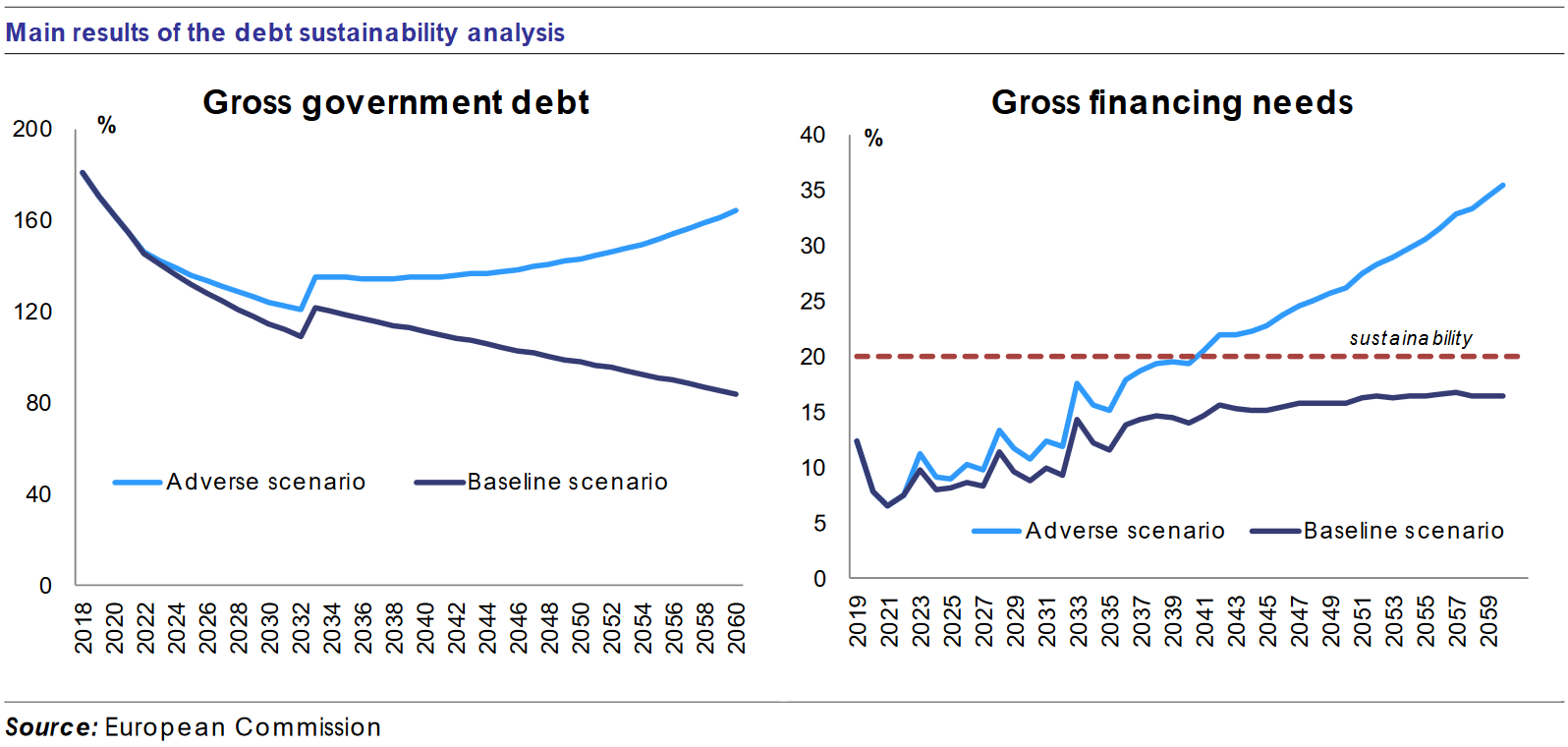On August 20, 2018, Greece successfully
concluded its third and final economic adjustment programme. The first
financial assistance programme started in May 2010, followed by the second
programme in March 2012, and finally the third programme which began in August
2015. Greece is now into post-programme monitoring.
Greece’s financial assistance programme
ended after 8 years. The Eurogroup acknowledges the significant efforts made by
the Greek citizens over the last years. However, in this context the Eurogroup
forced Greece to maintain a great primary surplus and, thereafter, to continue
to ensure that its fiscal commitments are in line with the EU fiscal framework.
They forced Greece to maintain a primary
surplus of 3.5% of GDP until 2022, and a primary surplus of 2.2% of GDP on
average in the period from 2023 to 2060!
The Eurogroup stressed that debt relief
measures should include incentives to ensure a strong and continuous
implementation by Greece of the reform measures agreed in the programme. Economic
developments and policies in Greece are monitored under the European Semester
for economic policy co-ordination and under the enhanced surveillance framework
according to Regulation (EU) No. 472/2013.
Greece is out-performing only 6 out of 11
key performance indicators made and monitored by Intra-European Organization of
Tax Administrations (Independent Authority for Public Revenue, IAPR, Ανεξάρτητη Αρχή Δημοσίων Εσόδων (ΑΑΔΕ)).
For instance, banks’ private sector deposits
have slightly increased since the end of the ESM programme, while reliance on
central bank funding has significantly decreased. A further loosening of
capital controls as of October 1, 2018, helped improving liquidity situation of
Greek banks, but slightly increased the confidence of depositors.
After the successful bond issuance in
January, Greece tapped the markets for a second time in March 2019. Credit
institutions improved Greece’s credit rating by some notches since 2018,
acknowledging the consolidation of the economic recovery.
 Finally, according with the debt
sustainability analysis that has been carried out earlier this year, as the
Enhanced Surveillance Report stated in June, 2019, the baseline scenario shows
that debt will remain on a downward path (save for the capitalization of the
deferred interest in 2033), but remains above 100% of GDP until 2048. Also, a
technical update of the adverse scenario shows that debt starts rising again
after the mid-2030s.
Finally, according with the debt
sustainability analysis that has been carried out earlier this year, as the
Enhanced Surveillance Report stated in June, 2019, the baseline scenario shows
that debt will remain on a downward path (save for the capitalization of the
deferred interest in 2033), but remains above 100% of GDP until 2048. Also, a
technical update of the adverse scenario shows that debt starts rising again
after the mid-2030s.
























0 comments:
Post a Comment